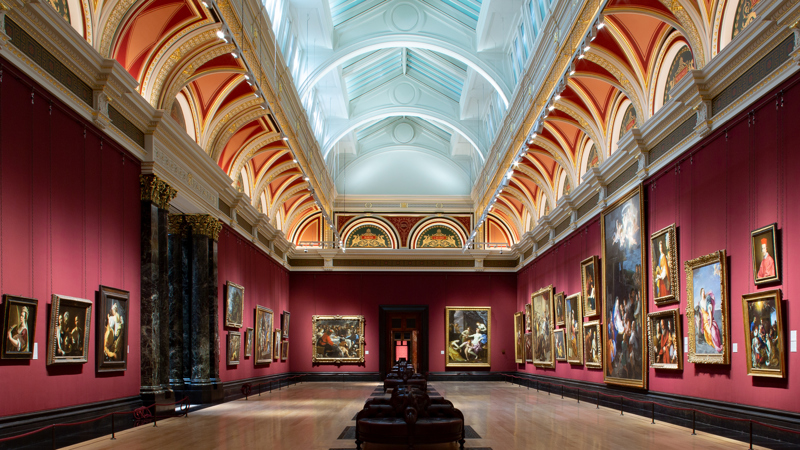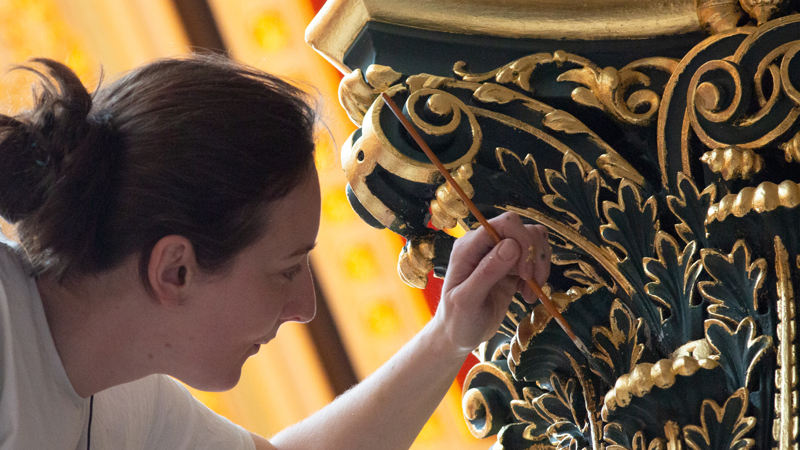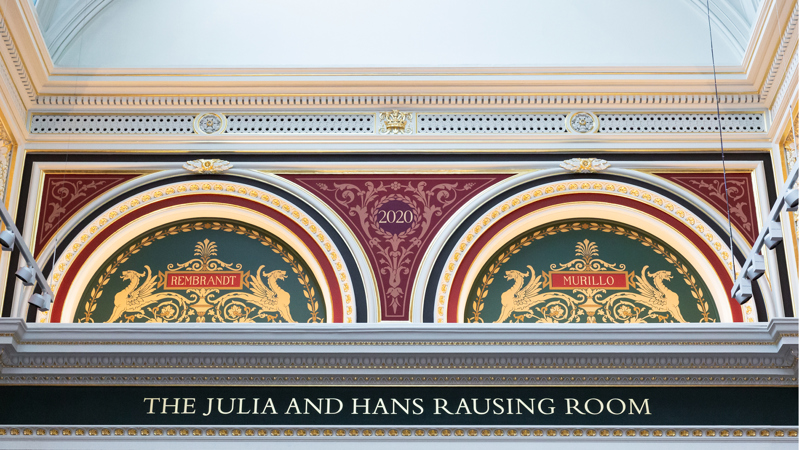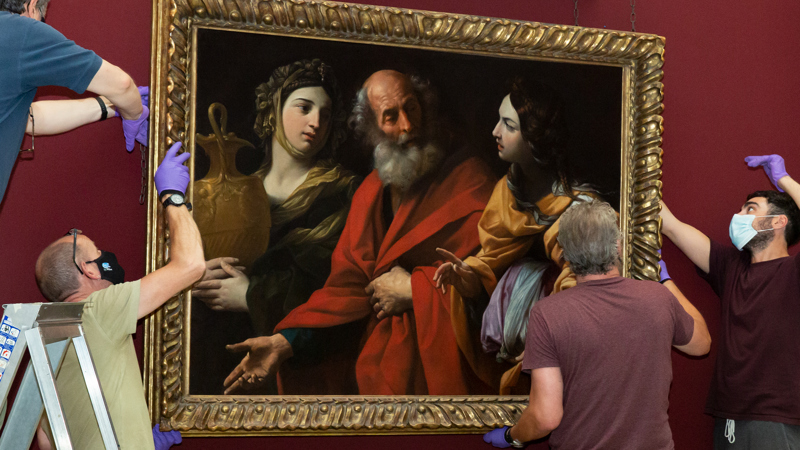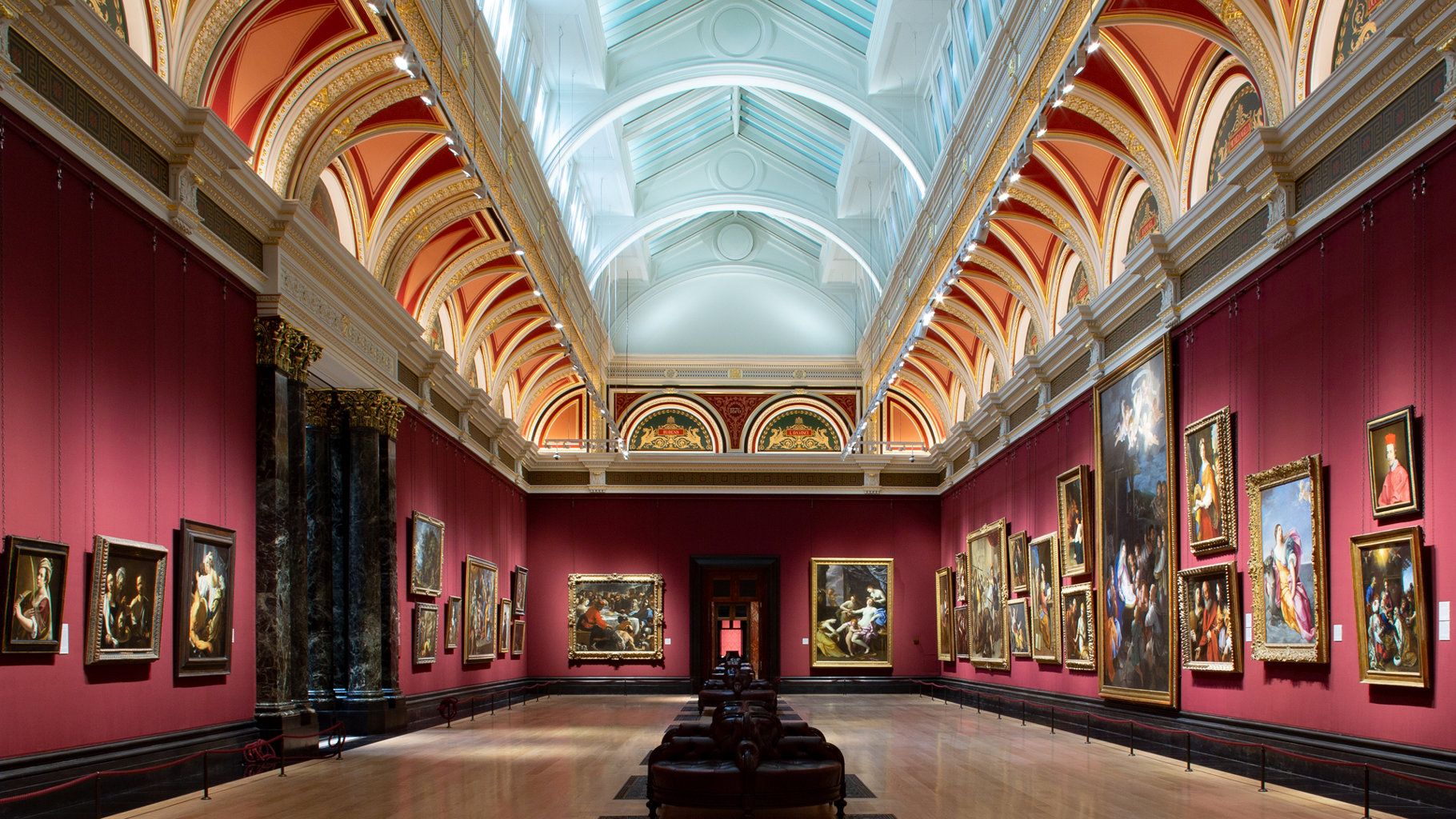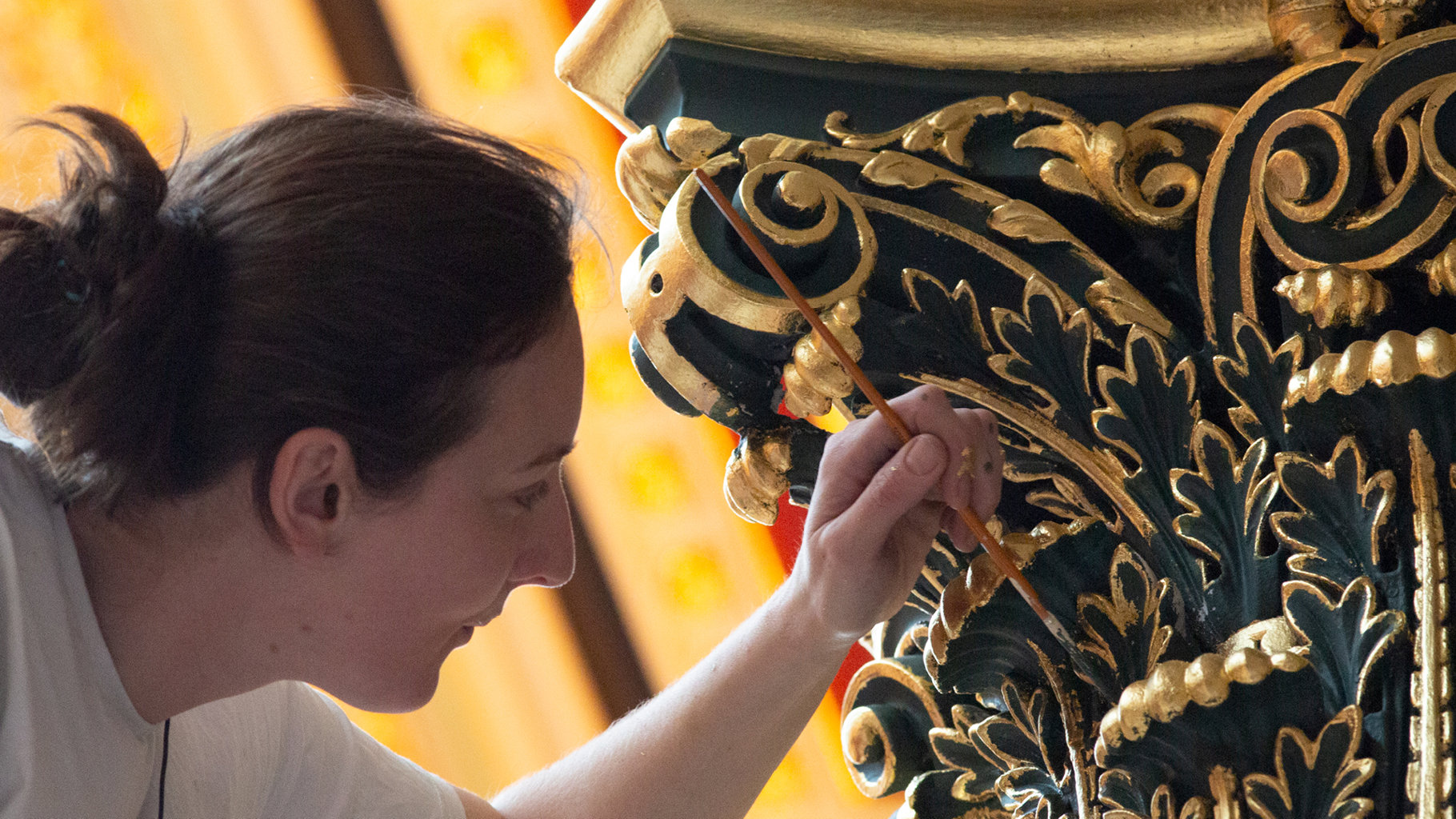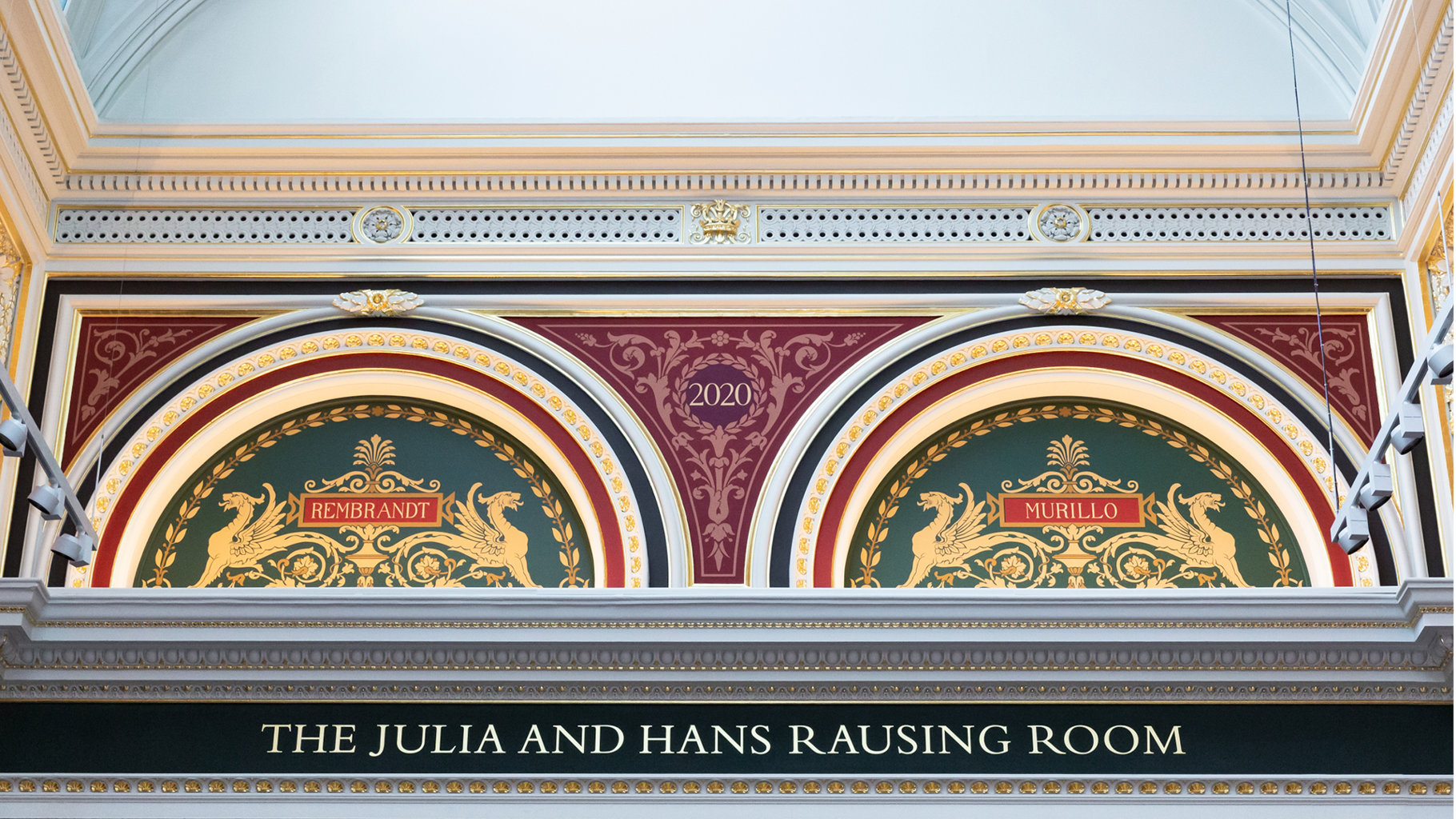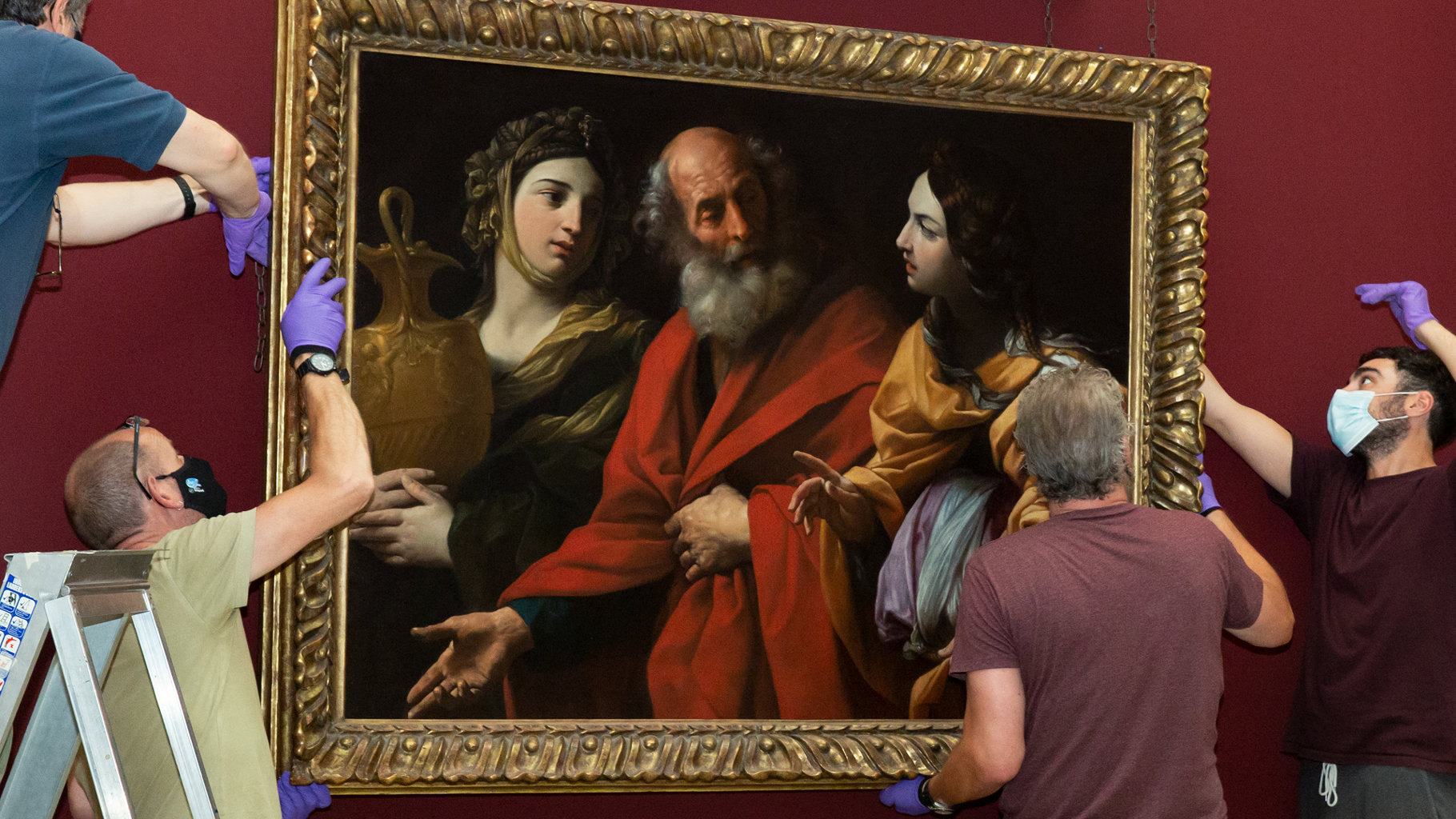NOTES TO EDITORS
Julia and Hans Rausing and the National Gallery
Julia and Hans Rausing have been involved with the work of the National Gallery since 2014, when they first supported Strange Beauty – Masters of the German Renaissance (19 February – 11 May 2014).
In 2017 they generously agreed to make a gift of £4m for the refurbishment project of Room 32.
In 2018, they made a substantial donation to Mantegna and Bellini (1 October 2018 – 27 January 2019). In 2019, Julia and Hans Rausing made another seven-figure gift towards the cleaning and conservation work relating to the Gallery’s elevations and Trafalgar Square façade.
The National Gallery is immensely grateful to Mr and Mrs Rausing for their exceptionally generous support to fund the costs associated with the major building and refurbishment works needed in Room 32 to return it to its former glory and for their continuous support.
The Gallery is delighted that Room 32 will be re-named The Julia and Hans Rausing Room.
The history of Room 32 and the Barry Rooms
From its foundation in 1824, the National Gallery’s collection has expanded through purchases and gifts. It soon outgrew its original site, a town house on Pall Mall.
In 1838, fourteen years after the National Gallery was founded, its collection was moved to a purpose-built gallery on Trafalgar Square designed by William Wilkins (1778–1839). In 1868 the architect Edward M. Barry (1830–1880) was selected to design an extension for Wilkins’ building. Barry’s cruciform design, with galleries running north and east linked by a central octagon, marked the Gallery’s first major extension. An established family firm of interior decorators, J.G. Crace and Son, devised sumptuous interiors and Barry’s new wing was opened to the public in 1876.
Room 32 was built as part of the north section of Barry’s extension. Measuring 34 by 12 metres, it remains the largest room within the National Gallery and was always intended to display paintings on a grand scale.
Multiple refurbishments and redecorations during the 20th century significantly altered its appearance, but a painting by Giuseppe Gabrielli from 1886 (on loan to the National Gallery from the Government Art Collection and displayed nearby) provides valuable evidence of how the room once looked. Looking south-west from Room 32, Gabrielli’s painting shows original architectural elements such as the laylight – the flat, glazed iron roof construction – and wood floors, and meticulously records the elaborate decorative details.
Photographs and documents conserved in the National Gallery Archive allow us to track subsequent alterations to Room 32: the laylight was replaced with the current clerestory roof by 1911 and the decorative scheme visible in Gabrielli’s painting was whitewashed during the 1920s, by which time Barry’s original floor ‘grilles’ had been replaced with larger ventilation units. The gallery was last refurbished almost thirty years ago: in 1991 it was fitted with light green damask wall coverings, new lighting tracks and hanging rails for the paintings.
Dates and opening hours
Open to the public: 8 July 2020
Daily 11am- 4pm, Friday 11am – 9pm
IMAGES
Images credit: Photos © The National Gallery, London
PRESS ENQUIRIES
National Gallery Press Office on 020 7747 2865 or email press@ng-london.org.uk
Publicity images can be obtained from https://press.nationalgallery.org.uk/

